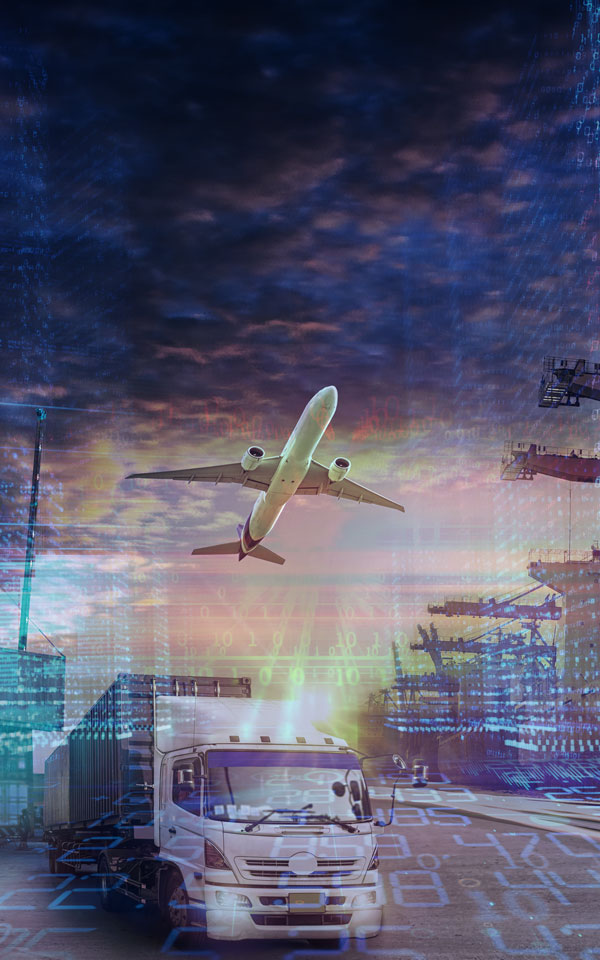




Despite the continued headlines of supply chain chaos, product shortages, and material delays, the growth in e-commerce is consistent and constant. In fact, it’s been picking up speed. According to the chairman of Siemens in an interview with CNBC, “the trade of goods has actually gone up, not down…ever since the middle of 2020, the demand for physical products has gone up dramatically.”
How much? Let’s look at the numbers. Global e-commerce sales are expected to end the year topping out at $4.92 trillion. By 2025, global e-commerce sales are expected to reach $7.39 trillion. While that’s impressive, there’s one area growing at a faster rate–the cross-border market–and it is estimated the global cross-border market will account for 20% of all e-commerce sales by 2025.
While this represents a great opportunity, it also adds complications when Posts wish to expand their cross-border services. We covered many of these cross-border complications in a previous blog post. But the cross-border landscape continues to change rapidly. From the STOP Act, ICS2, and international commercial lanes, to the growth in ETOEs, and remaining compliant with the ever-growing list of international rules and regulations, it’s no surprise Posts cited numerous obstacles in their efforts to truly embrace the growth in cross-border e-commerce.
To help Posts stay ahead of the curve and capture the full opportunity from the growth in cross-border e-commerce, we’ve assembled our top five recommendations. Read on to learn more.
Wherever possible, your customers will want to eliminate sticker shock for their recipients when shipping parcels internationally. Requesting the receiving party to pay the duties and taxes is simply a poor customer experience. Delivery Duties Paid (DDP) is the way to go, and there are many solutions available to help Posts make this possible. DDP solutions provide Posts and retailers with total landing cost calculators so customers know the total cost of their shipment (inclusive of taxes and duties) right at check out. However, according to the UPU, only 47 percent of operators in industrialized countries offer estimated total landing cost figures. So there is a huge opportunity for Posts to stand out with a solution customers want.
Green lanes fast-track the delivery of parcels and other shipments across global supply chains and help to eliminate bottlenecks and hold-ups caused by lengthy customs delays. However, rules and regulations must still be adhered to. Because of ICS2, all parcels and packets containing goods are included in the ICS2 mandatory declaration. This means Posts will need to make available, certain details about the packages and packets they are shipping. Fortunately, data enhancement and auto-classification solutions are available to help facilitate this process so Posts can leverage these fast-track green lanes and help postal customers provide complete and compliant shipping manifests and ITMATT data.
Real-time screening for restricted products and denied parties will be absolutely essential for Posts that wish to expand cross-border services. Currently, 10% of Posts from EMEA cite denied parties screening as the main obstacle to cross-border e-commerce growth, according to our most recent Future of Posts survey. Our partner Hurricane estimates that 66% of fines issued can be attributed to denied parties violations, so Posts will want to add solutions that help with product restriction screening and denied parties screening.
We’ve written extensively about the importance of making returns a simple and frictionless process for customers. After all, 96% of customers who are satisfied with the returns process said they’ll purchase with the retailer again according to the State of Online Returns, Narvar Consumer Report. But the traditional channels for international returns are costly and complex. In fact, it’s often cheaper for retailers to simply refund the purchase and let customers keep the products. It really shouldn’t be this way. But fortunately, global e-commerce returns management solutions exist to help retailers handle this process. And similar to domestic returns, Posts can form partnerships with retailers and e-commerce companies to support delivery.
And finally, Posts can leverage advanced OCR technology to digitalize the collection of customs, duties, and taxes, and customer contact data to lower the cost of cross-border compliance. Posts can use OCR solutions to capture data from CN22 and CN23 forms, capturing data while the parcel moves through the distribution network. With OCR, Posts can eliminate manual keying operations required to comply with customs requirements. From an outbound perspective, advanced OCR can also help with the creation of AED, enhance customer-provided data, and create the manifest for retail. From an inbound view, the same set of solutions can help auto-correct incomplete data, digitize tax collection and improve the overall customer experience.
Expanding cross-border solutions should be on every Post’s radar. Getting it right will not only help Posts capture the great growth potential it offers, but also mitigate the risks associated with shipping parcels across country borders. Implementing these five suggestions is a great start and the experts from Escher can help every step of the way.
